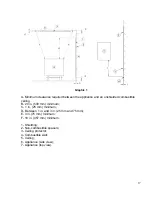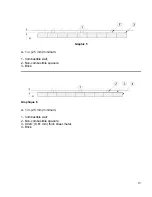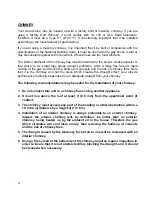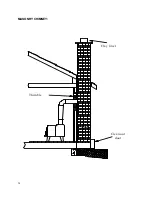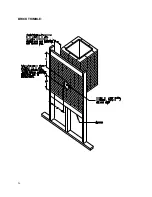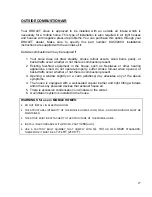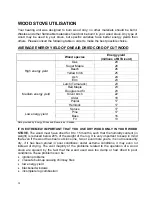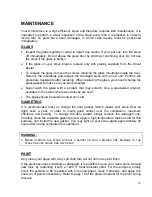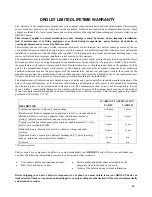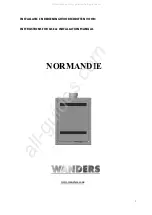
28
WOOD STOVE UTILISATION
Your heating unit was designed to burn wood only; no other materials should be burnt.
Wastes and other flammable materials should not be burnt in your wood stove. Any type of
wood may be used in your stove, but specific varieties have better energy yields than
others. Please consult the following table in order to make the best possible choice.
AVERAGE ENERGY YIELD OF ONE AIR DRIED CORD OF CUT WOOD
Wood species
Energy yield
(millions of BTU/cord)
High energy yield
Oak 29
Sugar Maple
28
Beech 26
Yellow birch
25
Ash 24
Elm 23
Medium energy yield
Larch (Tamarack)
23
Red Maple
23
Douglas red fir
23
Silver birch
22
Alder 18
Poplar 17
Hemlock 17
Low energy yield
Spruce 17
Pine 17
Bass 16
Fir 13
Data provided by Energy, Mines and Resources - Canada
IT IS EXTREMELY IMPORTANT THAT YOU USE DRY WOOD ONLY IN YOUR WOOD
STOVE.
The wood must have dried for 9 to 15 months, such that the humidity content (in
weight) is reduced below 20% of the weight of the log. It is very important to keep in mind
that even if the wood has been cut since one, two or even more years, it is not necessarily
dry, if it has been stored in poor conditions; under extreme conditions, it may even rot
instead of drying. The vast majority of the problems related to the operation of a wood
stove are caused by the fact that the wood used was too damp or had dried in poor
conditions. These problems can be:
ignition
problems
creosote build-up causing chimney fires
low energy yield
blackened
windows
incomplete log combustion
Содержание Adirondack
Страница 14: ...14 Figure 2 Clearances to combustibles and floor protector ...
Страница 24: ...24 MASONRY CHIMNEY Clay liner Thimble Clean out door ...
Страница 25: ...25 FACTORY BUILT THIMBLE ...
Страница 26: ...26 BRICK THIMBLE ...




